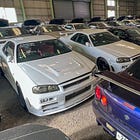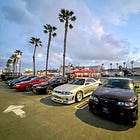Book Excerpt: Cult of GT-R, Chapter 4
Growth is everything to one GT-R shop, in the U.S. and abroad
Welcome to our weekly installment with excerpts from Cult of GT-R, my newest nonfiction book about the history and controversy of the Nissan Skyline GT-R, available now. Every Monday, I’ll post a short section from a different chapter, plus photos and commentary, to give you a taste of what’s in the book.
Check out our past excerpts below, and to buy Cult of GT-R, click here for my website or find it at your favorite online retailer. Enjoy!
Cult of GT-R: Chapter 4 Excerpt
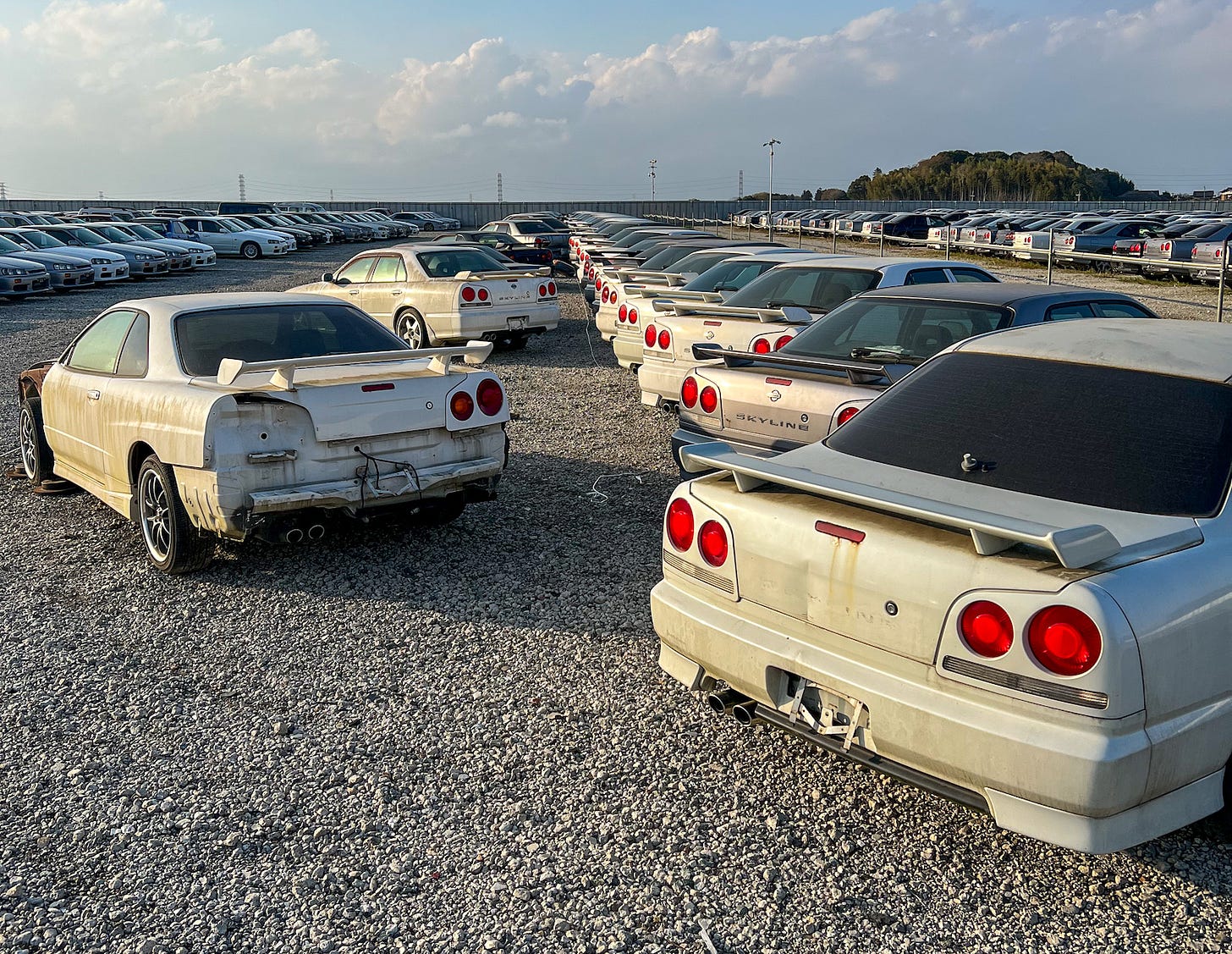
ABOUT AN HOUR outside of Tokyo, in the middle of an overgrown field of grass and weeds, sits Trust Kikaku. The company sits on a massive plot that was once farmland, which is good, because Trust Kikaku specializes in bulk. The grounds of its headquarters are blanketed with an abundance of 1990s sports cars. There is an abundance of decay in those cars, missing wheels or missing bumpers, or fenders with rusty holes the size of cantaloupes. One R34 Skyline is missing its left front fender and its left set of taillights. Another has fenders but no hood or engine. Most important, Trust Kikaku has an abundance of parts on hand, either ripped from the cars outside or purchased new from Nissan or Japan’s vast ecosystem of aftermarket shops.
That bulk of components is Trust Kikaku’s greatest strength, the ability to sell virtually any part or accessory a Skyline owner could want. But those parts are also the company’s greatest stain. Trust Kikaku will buy almost anything, as much of it as they can get, from five or 10 examples of a rare part in a single batch to multiple identical vehicles at once. The sheer quantity of product controlled by the company, some believe, allows it to control market prices. Depending on your perspective, Trust Kikaku is either a savior, with the one obscure piece you so desperately need; or an opportunistic vulture that generated that desperation intentionally, and built a GT-R pricing phenomenon by artificially creating scarcity and preventing the competition from stocking inventory of their own.
“It’s crazy that, because of this car, I get to take a paycheck home.”
I crept through the automatic front gate with caution, rolling slowly past the rotting chassis hulks to a parking spot near the front door. At which point my sleep-deprived brain was shaken awake by the appearance of a wiry, six-foot-four Russian bounding toward me. He gave a giant smile and a dramatic, cheery wave.
“Hello! We are so happy you have come to visit us. Please, let me show you around.”
This was Pawel Kmiec-Shibuya, head of Trust Kikaku’s overseas sales. An instant later, he was bounding around the property, giving an overview of his employer’s history while I processed the never-ending stream of gutted cars we rolled past.
I followed Pawel around the corner of the main office building, and we stopped to look over an expansive open field. Below, at the end of our dirt path, was a massive gravel parking lot—though you could also call it a graveyard—with each of the lot’s sides the length of a football field. The space held all manner of neatly parked JDM cars, row after row after row, lined up like eggs in a crate. There were hundreds. It looked like an optical illusion, the result of mirrors or trickery, a quantity and lineup that couldn’t have been real.
From our elevated position, I tried to count, pointing down at each car with a finger, one at a time, like a kindergartner. I stopped when I noticed that the cars disappeared over the horizon, their end impossible to see. Maybe 250 in total? Three hundred? Even Pawel didn’t know.
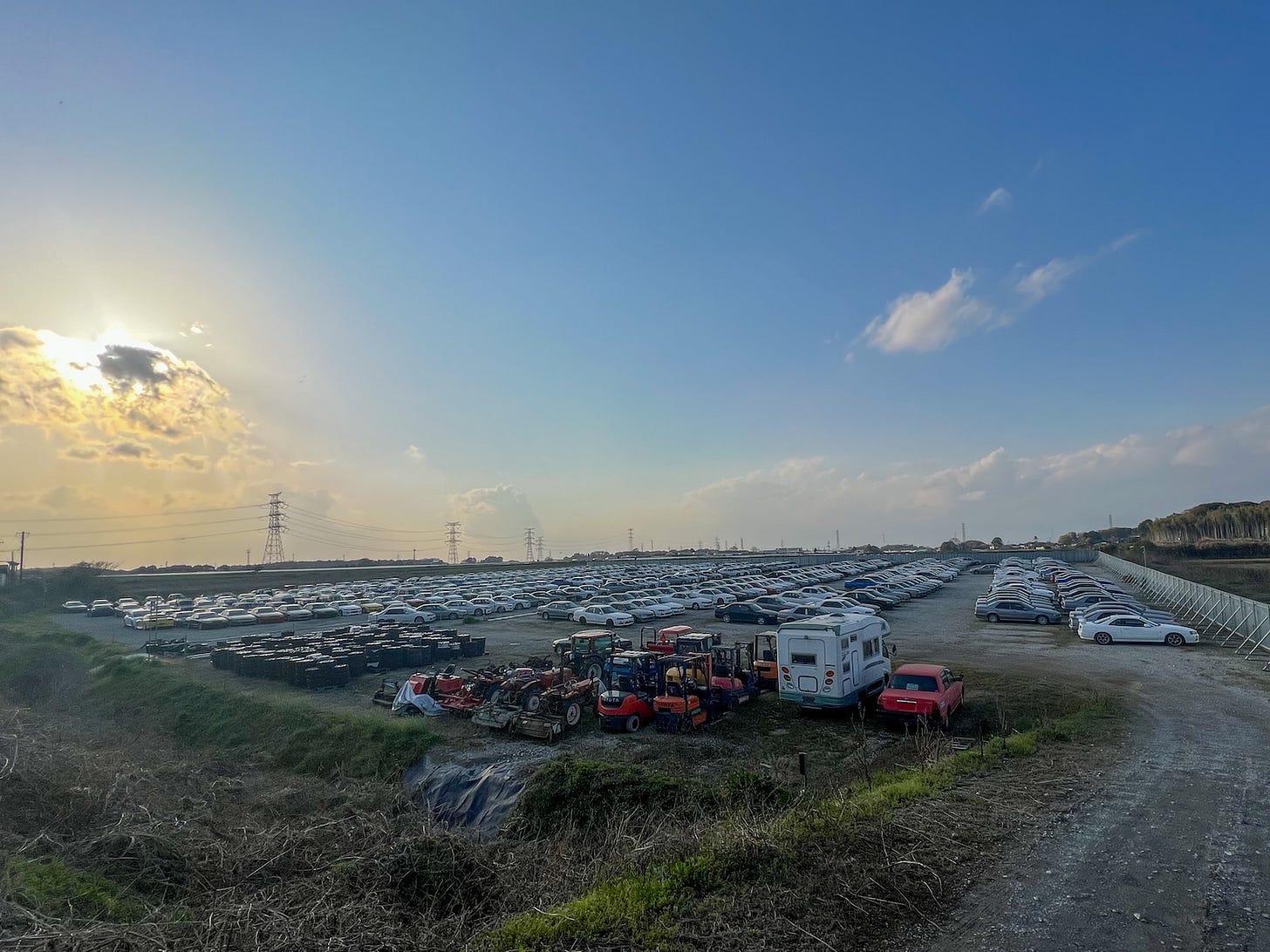
Volume is everything to Trust Kikaku. By keeping an almost absurd amount of product on hand, the company can sell what it wants, export what it wants, and rip what it wants from any car it wants. The world holds enough buyers to make any of those choices financially viable.
The stranglehold that the company now wields over the GT-R market allows them to charge almost anything they want. While it could be a coincidence that the GT-R market has exploded as Trust Kikaku has grown, it’s more likely that the two curves are at least tangentially linked.
Standing on that hill, I couldn’t decide if the lot below was feeding an appetite or sucking it dry. I only knew the answer was complicated. Earlier in the tour, Pawel told me about how, seven years back, he had tried to buy an R34 GT-T in good condition. The car had the desirable two-door body and a manual transmission, but its $10,000 USD price was just out of reach. Now, he lamented, that money will barely get you a slower Skyline, with the smaller engine, an automatic, and way more miles. Looking out at the mass of GT-T and other Skyline models taken off the market to be raided for parts, I wondered if he saw the irony.
*
NATURALLY, Trust Kikaku is taking aggressive steps into the American market. In late 2021, it established TKGT, its first U.S. branch, and in mid-2022, that offshoot set up shop in a small business park in California’s Huntington Beach. Weeks before flying to Japan, I visited the location to learn about its plans for expansion, and to meet its 24-year-old supervisor.
Octavio Sato was working at Target when he heard about a Japanese auto-parts company looking to expand. A SoCal native, Sato had grown up watching YouTube car videos on channels like The Smoking Tire, and GT-R-specific content from big-time creators like “Adam LZ” and “Tommy F Yeah.” He had always wanted to work in cars but didn’t see a practical path to get there, so he earned an undergraduate degree in computer science and cybersecurity and got ready to start a more traditional career.
“I don’t know how successful we’re going to be,” Sato admitted. “But we’re going to try.”
Sato followed Trust Kikaku on Instagram because Tommy F Yeah did. One day, the company account posted a job listing for a new position in California. At the very least, Sato thought, it would be good résumé fodder. “Even if it’s something temporary,” he told me, “hey, cool, at least I got to work in cars.” He got the job and said goodbye to Target.
Early on, Trust Kikaku had hired a consultant to help establish U.S. operations. But after a few months on the job, the home office had built such a good relationship with Sato, they decided to get rid of the consultant and work through him directly. Twice a month, a truck arrives with massive containers from Japan, carrying everything from fenders and turbos to stickers and T-shirts, and every day, the team loads an 18- wheeler to the brim with shipments for stateside customers.
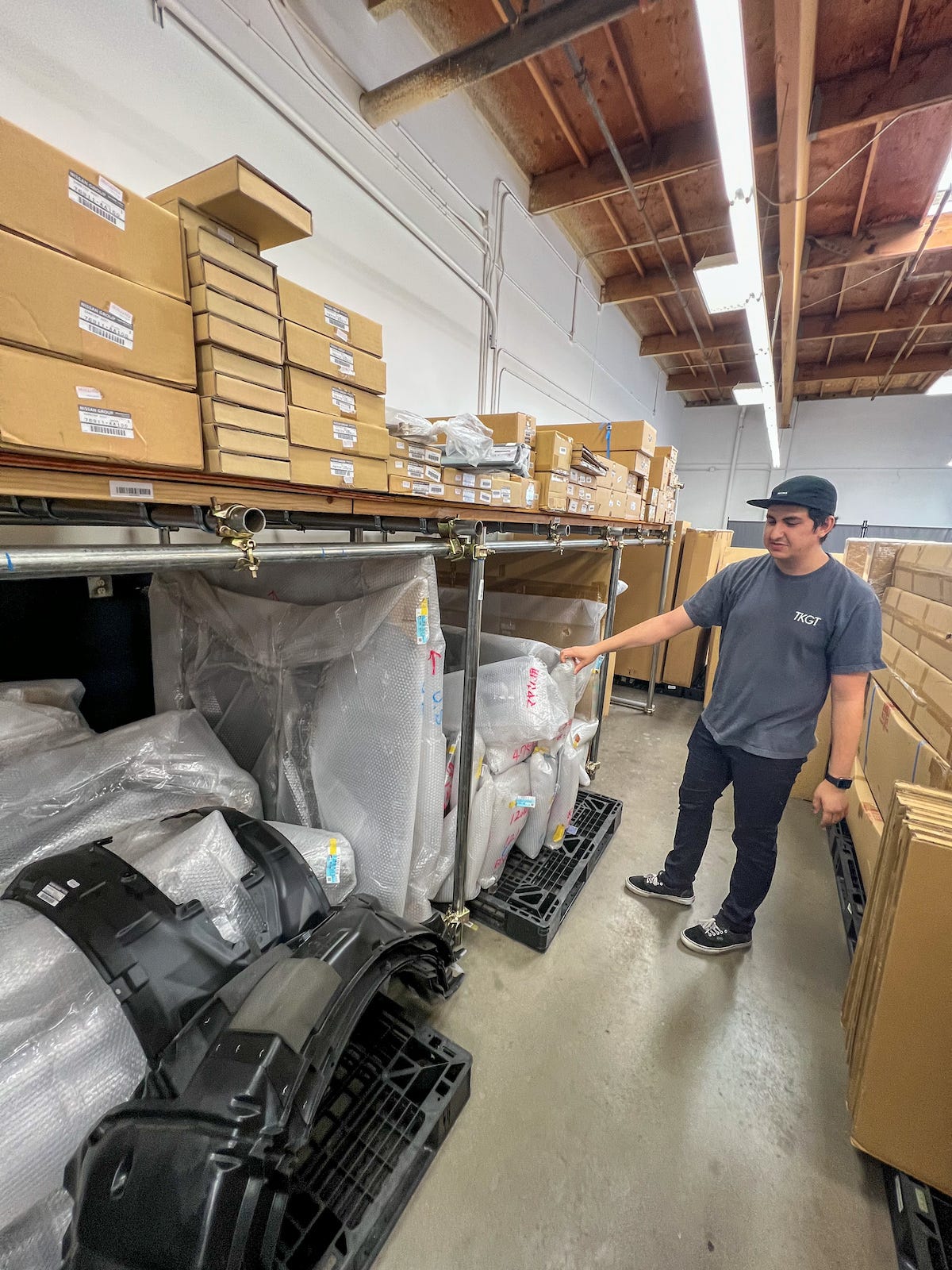
Parts are one thing, but Trust Kikaku wants U.S.-based TKGT to fulfill another critical aspect of its planned growth: vehicle imports. In close proximity to the legendary Japanese auctions where many of these cars come up for sale, Trust Kikaku has enviable access to cars that have lived their whole lives in their home country, a quality that can bring a premium on the market regardless of mileage or condition. As the R34 GT-R approaches its twenty-fifth birthday, Terada’s organization wants someone on the ground in the States—Sato—to manage the complex web of laws and regulations.
“I don’t know how successful we’re going to be,” Sato admitted. “But we’re going to try.” He acknowledged that vehicle importing can be extremely difficult, whether the cars are legal or not. Sato has already grown frustrated with both the process of registering a GT-R in California and the state’s glacial DMV processing times, but, he said, he has been encouraged by the clear requirements and open communication lines from his contacts at places like the Environmental Protection Agency (EPA) and the National Highway Traffic Safety Administration (NHTSA).
When I visited, TKGT’s Huntington Beach lobby had two R33 GT-Rs on its floor, which suggested the company had successfully imported two JDM cars—no small feat. The outpost had also managed to quickly connect with a hungry base. Word spread fast when the Huntington location popped up, with customers thrilled to pay domestic shipping on a wide array of parts that had previously required international rates.
Sato walked me through his warehouse. Shelves were stacked to the edges, product piled high and close to the ceiling. There were fenders, axles, fuel pumps, and more— used components sat in protective bubble plastic, with new ones still in their boxes from Nissan. The building held smaller items, too, like iconic heritage badges costing more than $400 apiece (down from a high of more than $600, in 2022, when the yen was stronger). The big sellers when I visited were original R32 and R33 transmissions and rear quarter panels. The latter were hot, Sato suspected, because R32 owners want to make their cars look like R34s.
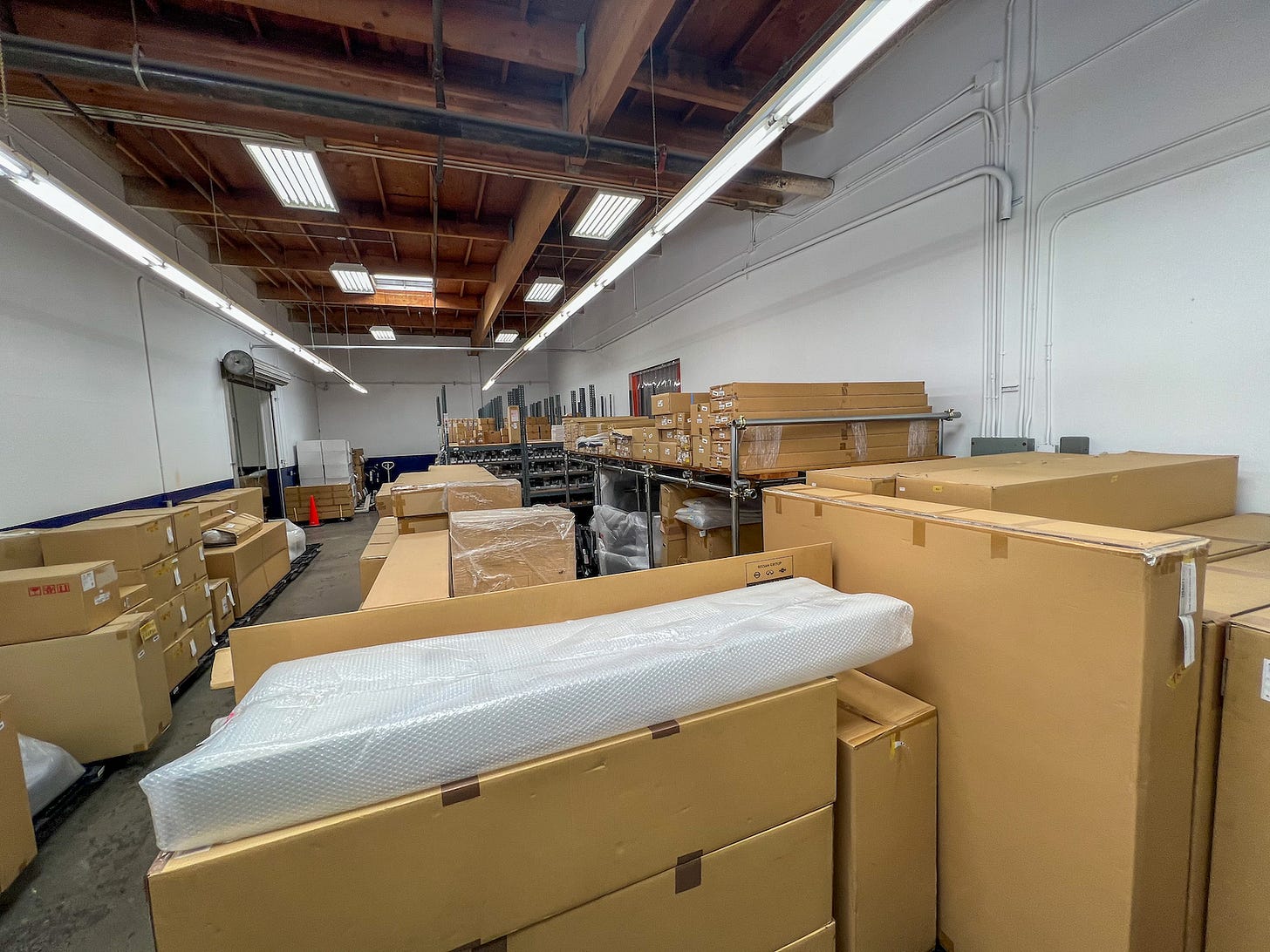
Naturally, the Golden State is by far TKGT’s biggest market—“The amount of Skylines in California is insane,” Sato said—but shipments to Florida, Texas, and the northeast are increasing. Several GT-R owners I spoke with said they had happily shopped with TKGT and would probably do it again, though they might not admit that fact publicly. In other words, Trust Kikaku is well and truly here now, an established part of the community.
“People are looking for one place to get it all done,” Sato told me. Then, laughing: “It’s crazy that, because of this car, I get to take a paycheck home.”
About This Chapter
Reporting on this chapter was a huge thrill. All the headlines focus on how much it costs to buy a Skyline GT-R these days. But once they have it, owners need to keep spending to keep them running, or upgrade them the way they want. Companies like Trust Kikaku make that possible—at a price.
This chapter made Cult of GT-R a business and economics book. It showed how demand and scarcity affected the price of badly-needed parts. And it showed how playing that scarcity correctly could help a company like Trust Kikaku grow into a juggernaut. That opened the door for its attempt to do what many Japanese companies aimed to do—conquer the bubbling U.S. market for Skylines.
While some companies in the GT-R world seemed to have all the answers, Trust Kikaku and TKGT were shockingly open in discussing their challenges. It’s a murky market with an uncertain future, and the massive Skyline graveyard painted a fascinating juxtaposition to expertly-kept GT-Rs I’d seen to that point. More than any other, this chapter proved to me that some people—even successful ones—are just trying to figure out this whole Skyline GT-R phenomenon as they go along.
Check out Carrara Media on Instagram, Twitter and Facebook and visit our store to order one of our many fine books and eBooks.




